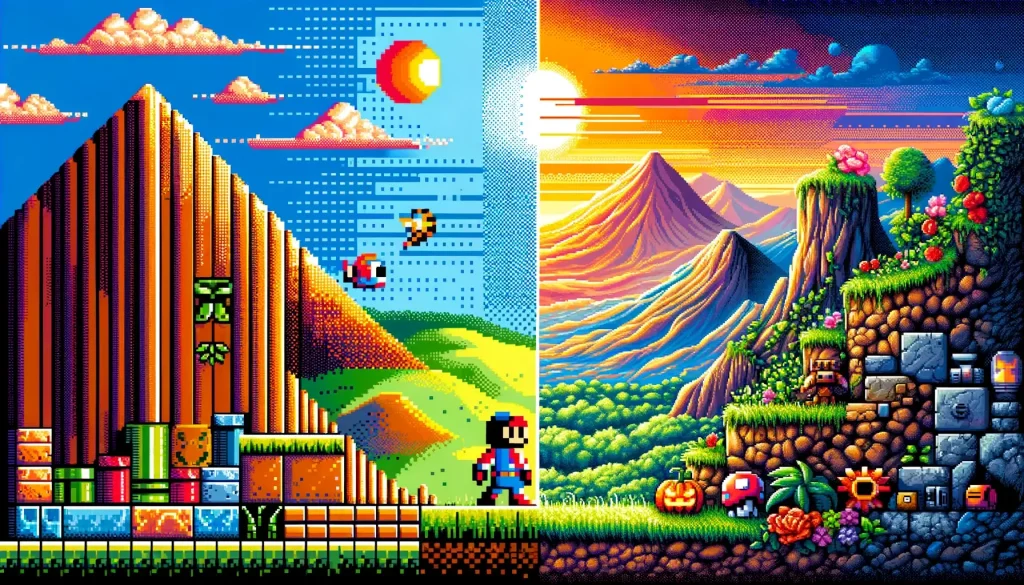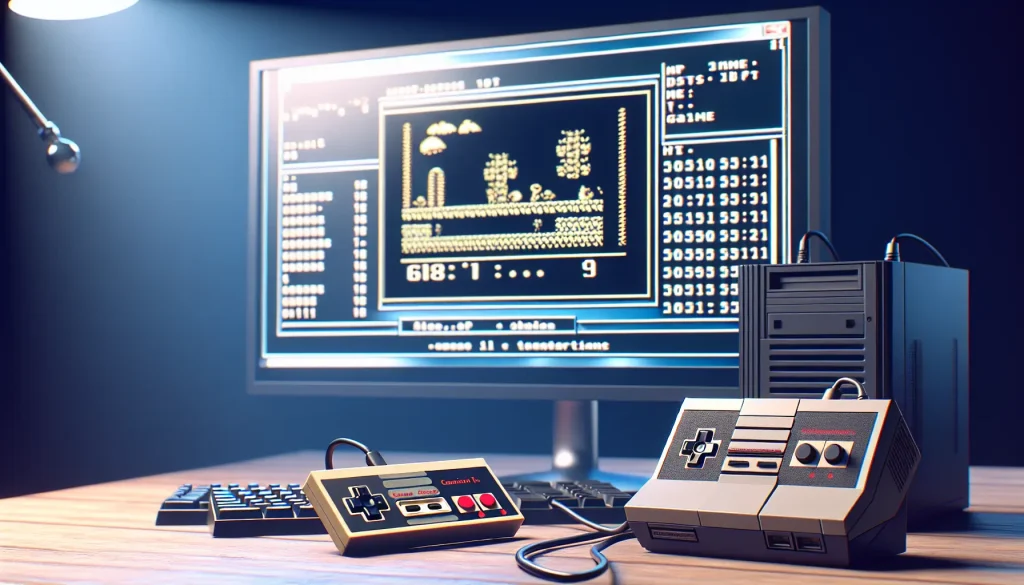Exploring the Environmental Impact of the Gaming Industry
Let’s face it, as gamers, we’re often so engrossed in the virtual worlds we’re part of that we rarely stop to consider the real-world implications of our hobbies. However, as environmental consciousness becomes more and more important, it’s time to turn our attention to the impact the gaming industry has on our planet. And no, we’re not talking about simply the physical waste of old gaming consoles. The issue runs deeper than that. Did you know that gaming makes a significant contribution to carbon emissions?
Here’s how:
Energy Consumption
The gaming industry is a major energy guzzler. Whether it’s high-performance consoles, high-end gaming PCs, or data centers powering online gaming servers, the amount of electricity this industry consumes is staggering. The Natural Resources Defense Council estimates that gaming consoles alone consume up to 10 billion kilowatt-hours of electricity annually. That’s equivalent to the annual greenhouse gas emissions of nearly 1.5 million cars!
Manufacturing Impact
Beyond electricity consumption, the process of manufacturing gaming hardware also has a significant environmental impact. Producing consoles and gaming rigs involves mining for materials, such as gold and tantalum, which can lead to deforestation and pollution of water bodies. Let’s not forget about the electronic waste produced when these devices reach the end of their life cycle.
Digital Downloads
At first glance, digital downloads may appear to be a ‘greener’ option than physical game copies. However, the environmental impact of downloading a game is not negligible. Storing games on servers and powering the data centers that host these servers also require a considerable amount of energy.
The Role of Cloud Gaming
Cloud gaming is rapidly becoming a staple in the industry, with services like Google’s Stadia and Microsoft’s xCloud gaining popularity. While cloud gaming can reduce the need for high-performance hardware at the user’s end, it shifts the energy consumption to data centers. This can potentially lead to increased energy use and carbon emissions unless these data centers are powered by renewable energy.
Now that we’ve looked into the environmental impact of the gaming industry, it’s clear that we’re faced with a significant challenge. But it’s not all doom and gloom! The gaming industry is taking notice and taking action, with major companies launching initiatives to reduce their environmental footprint. Stay tuned to learn about green gaming and the major steps being taken towards sustainability in the gaming industry!
Initiatives and Strategies in Green Gaming
The world of video games is a magical one, full of creativity, adventure, and excitement. But have you ever stopped to consider the environmental footprint that comes with all that digital fun? If not, don’t worry – you’re not alone. Fortunately, the gaming industry isn’t sitting idle (pun intended). There’s a wave of exciting new initiatives and strategies being put in place to make the world of gaming more sustainable. So, let’s take a look at what’s being done in the realm of green gaming.The Shift towards Digital
First things first, the shift towards digital gaming is a big step in the right direction. When you consider the manufacturing, transportation, and packaging that goes into a physical game, it’s clear that digital games have a much smaller carbon footprint. Plus, there’s the added bonus of being able to download your game instantly – no more waiting in line at the store!Power Efficiency
Next up on the green gaming agenda is power efficiency. With consoles and gaming PCs often consuming significant amounts of energy, the push towards more energy-efficient hardware is a must. Some companies are leading the way in this regard, developing consoles that consume less power, especially in standby mode. Remember, while it may not seem like a big deal to leave your console on standby, every little bit of energy saved is a step towards a greener planet.Recycling Old Hardware
It’s not just about the new, but also about what we do with the old. Initiatives encouraging gamers to recycle their old hardware are gaining momentum. In fact, some gaming companies are even offering recycling programs, where gamers can send in their old consoles for safe disposal or recycling. This is a great way to ensure that these devices don’t end up in landfills, polluting the environment.Green Gaming Events
Lastly, let’s not forget the impact of gaming events. Just like any other large event, gaming expos and conventions can generate a lot of waste. However, many event organizers are now implementing green strategies, like encouraging digital tickets, recycling programs, and even using renewable energy to power the event.Final Thoughts
These are just some of the initiatives being implemented in the world of green gaming. It’s a collective effort, from developers to players, everyone has a role to play in making gaming more sustainable. So the next time you’re about to embark on an epic gaming session, spare a thought for the environment – because green gaming is not just a trend, it’s a responsibility. Remember, the world of gaming is changing, and it’s up to us to ensure it changes for the better. So, join the green gaming revolution today, and let’s make gaming a force for positive change!Major Game Companies Taking Active Steps towards Sustainability
When you think about large corporations most likely to be proactive in environmental initiatives, chances are game companies are not the first ones to come to mind. However, you’d be pleasantly surprised to know that many of the industry’s giants are actively working towards sustainability, pioneering what has become known as ‘green gaming’.
Microsoft is leading the charge in many ways. Its ‘sustainability in gaming’ initiative is a testament to the company’s commitment to the environment. Not only is Microsoft aiming for its operations to be carbon negative by 2030, but it is also planning on making its packaging 100% recyclable. These are substantial steps that highlight the company’s dedication to going green.
On the other hand, Sony has focused its efforts on energy efficiency. Its PlayStation 5, for instance, comes with an option to put the console in a low power mode which significantly reduces its energy consumption. This simple, yet effective, feature could save the equivalent of the CO2 emissions from 1,000 cars annually if every user were to utilize it.
Nintendo, too, is playing its part in promoting sustainability. The company is making efforts to reduce the amount of energy its consoles use, as well as aiming for 99% of its waste products to be recyclable, reused, or used for energy recovery.
Here is a quick rundown of other notable initiatives by gaming companies:
- Ubisoft is implementing a paperless policy in its offices and opting for digital distribution of games.
- With Sega’s ‘Go Green’ initiative, it is decreasing the company’s carbon footprint by reducing energy consumption and encouraging recycling.
- Electronic Arts (EA) has teamed up with the Canopy Project, aiming to plant millions of trees around the world. EA also uses environmentally friendly packaging for its games.
It’s inspiring to see how these game companies are using their platforms to make a significant difference in the fight against climate change. By taking these steps, they are not only setting an example for other companies to follow suit but also showing us, the gamers, that we too can play a part in preserving our environment.
One could argue that every little helps when it comes to environmental conservation. But when such initiatives are implemented by industry giants that influence millions of people worldwide, the impact is considerably magnified. Let’s hope that these trends continue, and even more game companies join the ranks of those pushing for sustainability.
It’s clear that the gaming industry is starting to take sustainability seriously. It’s an exciting time for ‘green gaming’, and with such major players leading the way, the future looks bright. So, next time you’re enjoying your favorite game, remember that your gaming could be helping to protect the environment in some small way.
The Prospects for Eco-Friendly Gaming and User Engagement
As the conversation around global warming and climate change intensifies, the gaming industry is under increasing pressure to play its part. The prospects for eco-friendly gaming and user engagement are more exciting than ever before. In this section, we will discuss some innovative ways in which gaming companies are integrating sustainability into their products and services.
Building Eco-Friendly Games
One of the ways the gaming industry is taking steps toward sustainability is by creating eco-friendly games. These games promote climate awareness and environmental education in a fun and engaging way. For instance, SimCity, a popular game where players build and manage a city, has integrated renewable energy options like wind and solar power. Players are also encouraged to implement waste management strategies, teaching them the importance of eco-friendly living.
Developing Green Consoles
Another promising prospect for eco-friendly gaming is found in the development of more energy-efficient gaming consoles. Sony, for example, has pledged to create a more eco-friendly PlayStation console, which will utilize less power in rest mode.
Weaving Environmental Messages into Gameplay
Game developers are also embedding environmental messages within their games to subtly educate players about the importance of sustainability. For example, in the game Final Fantasy VII Remake, one of the central themes is the struggle between industrial growth and environmental preservation. By weaving these messages into the gameplay, players can learn about real-world environmental issues in a relaxed and enjoyable way.
User Engagement and Eco-Friendly Gaming
But how do these green initiatives impact user engagement? Actually, they’re a big hit! A survey by Green Man Gaming found that 95% of players were more likely to buy a game if it was developed sustainably. That’s a significant percentage and it shows that gamers are more than ready for eco-friendly options.
Moreover, with the introduction of games promoting environmental awareness, players are not just passively playing, but actively learning about environmental issues and potential solutions. This adds a new depth to gaming, making it an engaging, educational and ultimately more satisfying experience.
As the gaming industry ventures into greener territories, it’s exciting to see the innovative ways they are integrating sustainability. With the right balance, this industry can become a powerful tool for promoting environmental awareness and inspiring change.
Stay Tuned for More
Stay tuned for more updates on the eco-friendly gaming front. As this trend continues to evolve, we can expect more innovative solutions that make gaming a more sustainable and engaging pastime.












